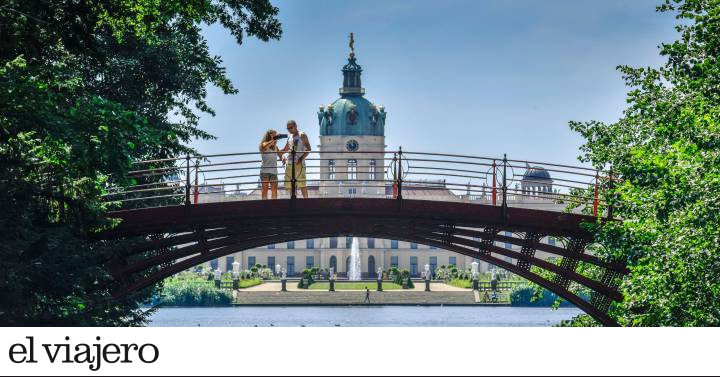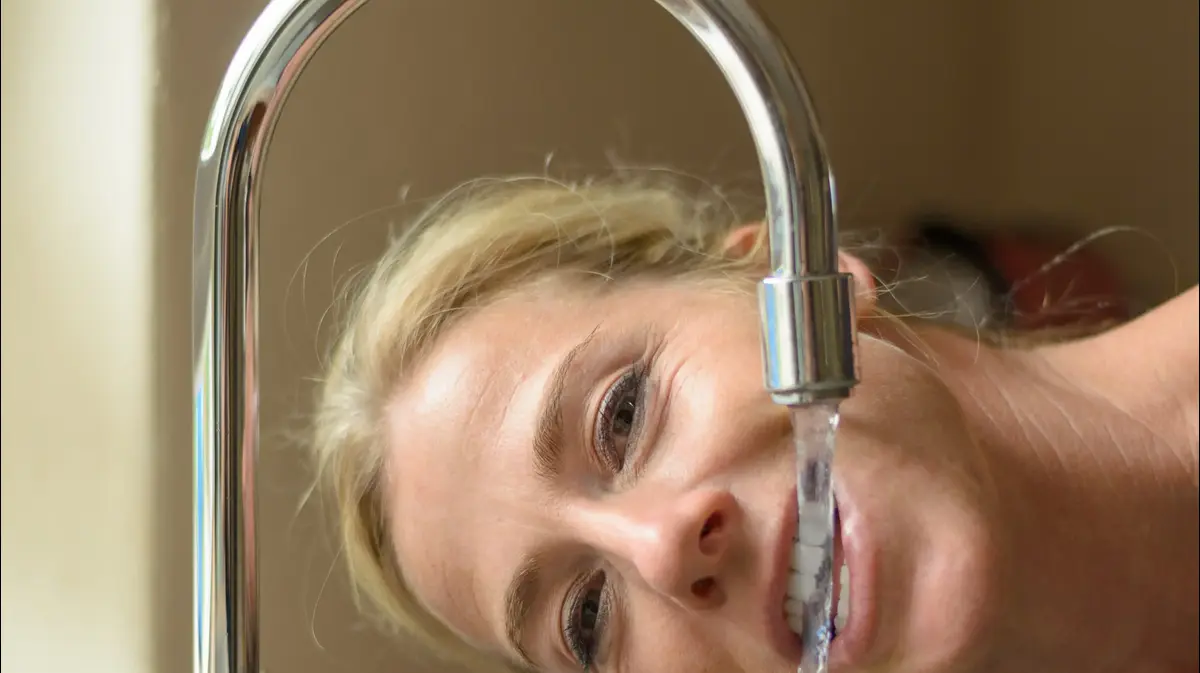MORE INFORMATION
In the Lonely Planet guide to Berlin
With an overwhelming cultural and leisure offer and a monumentality that mixes classicism and avant-garde, it is difficult to think of
Berlin
as a green destination.
But it has been for years.
In addition to being the German city where the
green conscience
has penetrated the most
,
With the proliferation of buildings that use recycled wood to absorb more CO2, parks and green spaces appear everywhere in all its neighborhoods.
Its great green lung, located in the center, is the majestic Tiergarten, but nature also alters (for the better) the landscape of less central neighborhoods, in which the traveler almost forgets that he is in a great European capital.
The proximity of forests and lakes, the beauty of the villas with gardens and the presence of famous cultural centers make these peripheral districts a sector highly coveted by diplomats and celebrities, but also a nature getaway that can be done by metro or in bike.
Autumn panorama of the Tiergarten.
travelstock44 ALAMY
Tiergarten, the green heart of Berlin
The first thing that catches your eye when unfolding a map of the German capital is the great green spot that bursts into the west. It is the Tiergarten, the most famous park in the city and a true lung that occupies 210 hectares. It was originally conceived as a
hunting ground for the princes of Brandenburg
- hence its name, "animal garden" in German - but in the 18th century,
Frederick II the Great
, who did not like hunting at all , asked the architect
Georg Wenzeslaus von Knobelsdorff
to transform it into a place of recreation. During the first half of the 19th century, the landscaper
Peter Lenné
turned it into an English park and from that time there are several statues or monuments, such as those dedicated to
Queen Louise
and her husband
Frederick William III,
or the musicians
Beethoven, Haydn and Mozart.
In 1945, coinciding with the fall of Nazism, the Tiergarten was a shadow of itself and a mirror of the painful moment that the city was going through.
Ravaged by
bombardments
and
street-by-street fighting
in the last weeks of World War II, it also suffered from the felling of trees to obtain firewood with which to warm up, and the cultivation of potatoes and vegetables by some Berliners who had practically no of everything.
Between 1949 and 1954 it was repopulated with trees, but never fully recovered its previous splendor.
In the lead years of the Cold War it stood right on the border between East and West Berlin, so when the Wall fell in 1989 it suddenly became the heart of the new Berlin.
Today it is a generous urban park, ideal for a picnic,
jogging,
a bike ride or playing a soccer game.
In summer it fills up with Berliners, especially families of Turkish origin (the largest immigrant group in the country) who gather around large barbecues.
Pier next to the Am Neuen See café in the Tiergarten park in central Berlin.
dpa alamy
A good place to take a break in the walk is in the surroundings of the
Am Neuen See café
, relaxing and charming. In summer, the traveler can lie down in a hammock or take a romantic boat ride on the lake, while in winter they will find shelter behind its large windows.
The
Victory Column,
erected on a large square on 17 de Junio Avenue that crosses Tiergarten from east to west, fixes the point where five avenues meet. The slender monument was built in front of the Reichstag (the Parliament building) to celebrate the
military victories of Prussia,
in alliance with the Austrian Empire
,
over Denmark, Austria and France (1864), but the Nazi regime decided to move it in 1938 to its location current as part of his ambitious plans for his new capital, Germania. Not far from the Victory Column, on the banks of the River Spree, is the
Bellevue Palace
It has been the official residence of the President of the German Republic since 1994. It is a white neoclassical building built in the 18th century to be the summer residence of Frederick II's brother, Ferdinand of Prussia.
In World War I it was used as a base for the military high command and later it was even divided into rooms for rent.
But, without a doubt, one of the most charming places in the park is the
Rousseau-Insel
, a small island in the middle of a lake that pays tribute to the Swiss botanist and naturalist Jean-Jacques Rousseau (1712-1778).
The Charlottenburg Palace and Gardens in the German capital.
sanga park alamy
Schlossgarten Charlottenburg, Imperial Gardens
In the gardens of
Schloss Charlottenburg you
can breathe imperial airs. This luxurious baroque palace is the best place in Berlin to admire the grandeur of bygone times, and it is also another interesting green space in which to enjoy gardens designed by the best landscapers of the 18th century. The gardens of Charlottenburg, idyllic as a whole, are a hodgepodge of styles, between French Baroque and English landscaping. After visiting the treasures and royal rooms of the palace, badly damaged by the Allied bombings during World War II and restored in the following decades, it is a must to stroll through these gardens, in which there are other smaller constructions.
Among shady paths, flower beds, meadows, trees and the carp pond we find for example the
Mausoleum
, the
Belvedere
or the
Neuer Pavillon
. The Mausoleum is shaped like a temple and was conceived as the last resting place of Queen Louise, and expanded for other members of the family, such as Kaiser Wilhelm II. The Belvedere is a rococo domed mansion that was conceived in the 18th century to serve as a private retreat for Frederick William II and where séances were even held. Nowadays, it houses a small museum with a collection of porcelains from the Royal Manufactory of Berlin. The Neuer Pavillon, finally, was built by his successor Frederick William III as a summer residence, inspired by the neoclassical Italian villas he had known during a trip to the Mediterranean country.
Near the carp pond you can have a picnic in the splendor of royalty and for a more formal break there is the
Kleine Orangerie
, a restaurant serving German cuisine with a tree-lined terrace near the entrance to the palace gardens.
Aerial view of Lake Teufelssee, a glacial lake in the Grunewald Forest, in Berlin's Charlottenburg-Wilmersdorf district.
S.Rohrlach getty images
Grunewald, a haven for the rich
One of the green areas with the most pedigree in Berlin is
Grunewald
, a neighborhood that was built from 1889 after the purchase of 234 hectares of forest by a banking consortium. Today, with its luxurious developments and tree-lined streets, it is one of the most exclusive areas of the city, but it already attracted bankers, professors and artists at the beginning of the 20th century. Its luxurious villas, very heterogeneous from an architectural point of view, attest to this splendorous past.
Gardens, palaces and several art museums
are also hidden here
.
Omnipresent, the Grunewald Forest, the former hunting ground of the princes of Brandenburg, extends over 3,000 hectares. After World War II, the area was part of the US sector and this heritage is reflected in facilities such as the
Allied Museum
and the huge US
consulate
. When the Wall was still standing, it was the largest green space accessible to West Berliners, who invaded it on weekends in warmer weather. Now it is not so popular, but the tranquility that is breathed is appreciated.
The extensive forest, criss-crossed by trails and dotted with lakes, stretches west to the Havel River and allows you to take a break from the city. When entering it it is not difficult to see wild boar, deer and other species. We also find a curious hunting lodge: the Jagdschloss, a testimony to the origins of the Renaissance in Berlin, located on the shore of the lake of the same name. It was built in 1542 and today it serves as a museum of painting, especially German and Dutch. A little further south, we can travel by ferry to the small
island of Lindwerder
. Or climb the Karlsberg (a promontory) and enjoy from the tower (Grunewaldturm) a wonderful view over the Havel.
Four small artificial lakes (
Hubertussee, Herthasee, Koenigsee
and
Dianasee
), one after the other, oxygenate an already very green neighborhood, reinforcing its exclusive character by having many of the palaces and villas with private piers.
Sailboats on Lake Wannsee.
Peter Delius alamy
Wannsee and its romantic villas
A little further west,
Wannsee
boasts its romantic lakeside villas, which is actually a widening of the River Havel. When the weather is good, it is ideal to get away from the urban bustle: you can navigate the lake, walk through the forest, visit
the Island of the Peacocks
- which can be reached by ferry and has been a protected natural area since 1924 -, take a tour of a Prussian palace or get a tan at the
Strandbad Wannsee
, a recreation center with a kilometer-long sandy beach. For more than a century, this public lake beach has delighted water lovers with its 1,275 meters of sand. Its wide strip of sand, with a total area of
355,000 square meters
It gets crowded on hot days, especially on weekends.
In addition, you can rent boats, play volleyball, basketball or table tennis, or simply have a drink at the edge of the lake.
Its northern end is reserved for nudists.
Beach atmosphere at Lake Wannsee in Berlin.
Kuttig - Travel alamy
One of the most interesting places in Wannsee, on the western shore of the lake, is
Max Liebermann's villa
, which from 1909 until his death in 1935 was the summer residence of the German impressionist painter, founder of the Berlin Secession ( an alternative artists' alliance to the state-based, more conservative one).
In love with nature, he used to paint the gardens as he saw them through the window of his study upstairs.
The wonderfully restored gardens are made up of three sections: one circular, one square, and one oval.
You can enjoy the wonderful views of the lake while having a coffee and cake on the terrace of
Café Max
.
Canoes and pleasure boats on the River Spree as it passes through the Köpenick district of Berlin.
Zoonar GmbH Alamy
Köpenick, the largest lake in Berlin
This neighborhood in the southeast of Berlin, with an area of 128 square kilometers, is the largest district in the city. 70% of its territory is occupied by water and wooded areas, so life here moves at a calmer pace. Although those looking for a more lively atmosphere will find it in the charming historic town of Köpenick (of course, surrounded by water), almost as old as the city itself, since it was created in 1240, just three years after the founding of the own German capital. Located 20 minutes by metro from the center, the place is famous for its Baroque palace, which houses a museum of decorative arts, and the neo-Gothic town hall. Furthermore, its former industrial area (
Oberschöneweide
) is becoming a new hotbed for artists and digital creatives. Nothing compares to its three natural attractions: Berlin's largest lake (
Müggelsee
, on whose north shore there are numerous restaurants and terraces), its largest forest (
Köpenicker Stadtforst
) and its highest natural elevation (
Müggelberge
, 115 meters).
The Müggelsee is to East Berlin what the Wannsee is to West Berlin.
With almost eight meters of maximum depth and four and a half kilometers long and two and a half wide, it is the largest lake in the city.
Along its shoreline there are three large official bathing areas: Friedrichshagen, Müggelsee beach (with an area for nudists) and the Kleiner Müggelsee beach.
Around the lake there are multiple companies that rent the most diverse boats: from a motorboat to a canoe.
Viewpoint over the Heilige See lake in Potsdam, a few kilometers from Berlin.
Bildagentur-online / Schoening alamy
Other green spaces to discover by metro
Further south of Grunewald are other green neighborhoods where important cultural institutions are also located, such as
Dahlem
and
Zehlendorf
, where US forces established their headquarters during the Cold War. In Dahlem, in addition to magnificent houses, there is also the
Free University of Berlin
, created in 1948 as an alternative to the
Humboldt University
, which remained in the Soviet sector.
In addition, there are many other lakes and forests that serve as resting places for Berliners and allow you to spend a day of vacation without leaving the capital. Places like
Liepnitz,
to the north, a magnificent lake with clear waters in the middle of a forest; or
Tegeler See
, the second largest lake in Berlin - with an area of 4.6 square kilometers - located northeast of the capital, relatively close to the center and with a tree-lined beach that can be reached by bus.
And if we head to the southwest, Lake
Schlachtensee,
surrounded by the Grunewald forest, is pleasant in any season and has the advantage of being reached by underground.
In summer countless bathers come as it is considered the cleanest lake in Berlin.
Fishermen also value the high quality of its waters, where they usually catch perch, white bream and gobies.
In addition, next to it there is a seven-kilometer promenade through which you can walk or run.
Heiliger See
, in neighboring Potsdam, is another charming lake, with lots of greenery and surrounded by small Baroque palaces.
Find inspiration for your next trips on our Facebook and Twitter and Instragram or subscribe here to the El Viajero Newsletter.














